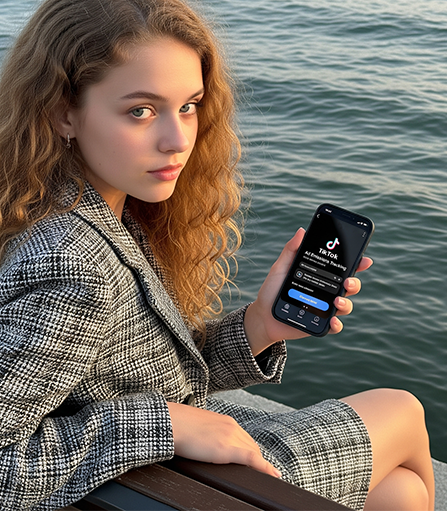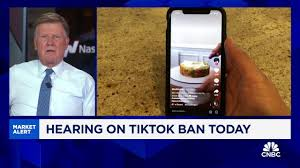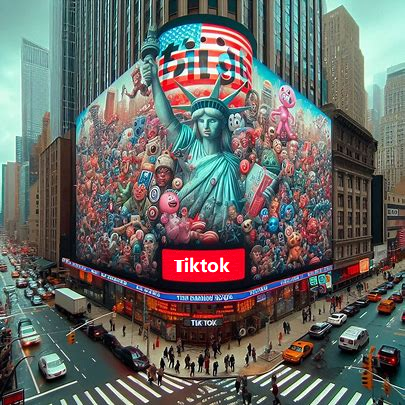Recently, TikTok has reached a cooperation with environmental impact monitoring company Scope3 to officially launch a new feature: Ad Emissions Tracking. This means that advertisers can not only see the effect of their advertising, but also see for the first time - how much carbon your ads are emitting.
So, how does this new feature work? What does it mean to advertisers? This article will explain it in detail and teach you how to start the road to sustainable advertising.

What is the Ad Emissions Tracking feature of TikTok?
TikTok announced a partnership with environmental impact monitoring company Scope3 to allow advertisers to track and analyze carbon emissions data generated by their advertising campaigns. This is one of the first open carbon measurement models provided by a short video platform, providing advertisers with:
1. Ad Selection
2. Media Distribution
3. Creative Delivery
Through this data, brand owners can obtain:
Carbon emissions data for each ad placement
Comparison of carbon efficiency under different advertising strategies
Recommendations for optimizing delivery routes to reduce carbon footprint
This model follows the Ad Net Zero Global Media Sustainability Framework (GMSF) and has a high degree of credibility.
How to use this function?
Currently, this feature is mainly for advertisers who place ads through TikTok's commercial advertising platform. The following is a brief usage process:
1. Enable this feature through your advertising account manager or TikTok for Business platform
2. Select "Enable carbon measurement" in the campaign settings interface
3. After completing the ad settings and running, you can see the "Scope3 carbon emissions estimation data" in the report
4. The analysis report provides dimensions such as carbon emissions per thousand impressions (CPM), total emissions value, and impact factors
5. Adjust content optimization, delivery time, and media mix based on the results
Tip: It is recommended to combine TikTok's recently launched "Green Advertising Creative Guide" and use low-energy visual effects and simple layouts to reduce energy consumption when advertising.
Teach you step by step to master TikTok's carbon emission measurement function
Step 1️: Create an ad using TikTok Ads Manager
Go to your TikTok Ads account and set your budget, target audience, region and other parameters as usual.
Step 2️: Enable reporting tracking supported by Scope3
TikTok will integrate Scope3's carbon emission model in the background. You do not need to install additional plug-ins, but it is recommended to confirm with your account manager whether the function has been enabled.
Step 3️: View the carbon emissions report
After the ad runs, you will get the carbon emission data for each delivery, such as total CO₂ emissions, emission intensity per thousand impressions (CPM), etc.
Step 4️: Optimize your strategy based on the report
If the report shows that emissions are higher for a certain type of creative or location, you can:
Optimize video compression rate to reduce data transmission
Reduce spending on media with high carbon footprint
Focus on target groups with higher interaction rates and reduce invalid impressions
Three optimization dimensions of green advertising
1️. Creative Efficiency
Every extra 1MB of video material means more data transmission and energy consumption.
How to reduce the "carbon weight" of the material?
Video compression without distortion: Use H.265 encoding to compress video and improve transmission efficiency.
Shorten the duration: 10-15 second videos are lighter and more efficient, and also fit in with TikTok's fast-paced content ecosystem.
Simplify animation effects: streamline transitions, transitions, and filters to reduce rendering load.
Reasonable resolution: Generally 1080p is sufficient, avoid unnecessary 4K video.
Tip: Use TikTok Creative Tools or CapCut to optimize compression parameters with one click.
2️. Delivery Optimization
Every display generates carbon emissions, but not every display is effective.
Reducing "ineffective placement" is reducing carbon emissions!
Precise targeting: Use TikTok's interest tags, behavior history, and LAL model to reduce wasted impressions.
Avoid high-emission areas: prioritize deployment in areas where data centers are more efficient (the Scope 3 report will provide this information).
Limit frequency: Control the number of times a user sees the same ad each day to avoid repeated carbon emissions.
Use green label inventory: TikTok may introduce low-carbon advertising inventory labels in the future, which will be given priority.
Suggestion: Check the Scope3 carbon emission report regularly and make A/B test adjustments to high emission parameters.
3️. Budget and schedule optimization (Media Planning)
Don't let the budget become a "booster of high emissions".
Concentrated delivery time: Delivery during peak user activity periods (such as noon and evening) to improve reach efficiency.
Set green KPIs: such as "carbon emissions intensity per thousand impressions (gCO₂/CPM)" instead of just focusing on CPA.
Reduce excessive redirects: Excessive tracking and targeted remarketing will result in additional server requests and carbon emissions.
Set "Green Advertising ROI":
Introduce carbon emission indicators when considering ROI, for example:
the number of conversions obtained for every 1,000 yuan spent & the number of CO₂ emissions per ton.
Why is this feature important?
1. Carbon neutrality will soon become the norm in the advertising industry
TikTok has set a goal of achieving carbon neutrality by 2030. This is not just an environmental protection "gesture" but also an industry trend.
From Meta to Google, to Amazon, technology giants are all planning for green advertising. In the future, when Party A chooses a delivery platform, "low-carbon label" may be one of the decisive factors.
2. Provide "data support" for brand ESG strategy
Have you ever written in your brand report that "we value sustainable development"?
Now you can provide specific data to support your statement, such as:
"We have run 20 ads on TikTok, and through the carbon emission assessment system, the overall carbon footprint is controlled at X tons, which is lower than the industry average."
This will make you more influential in brand ESG reporting, financing presentations, and CSR public relations.
3. Optimizing advertising effects ≠ sacrificing environmental protection
Scope3's carbon emissions model not only tells you how much carbon emissions your advertising generates, but also helps you:
Find high-carbon delivery combinations (such as certain targeting or certain media formats)
Optimize advertising strategies to reduce environmental costs without affecting effectiveness
To put it bluntly, it saves money, carbon, and worry.
Conclusion
The carbon emissions tracking service provided by TikTok brings a key opportunity for advertisers: from invisible to visible, from talking about environmental protection to doing environmental protection.
Will you enable carbon tracking in your next ad campaign?



